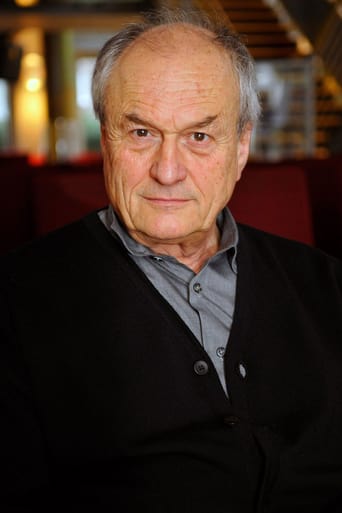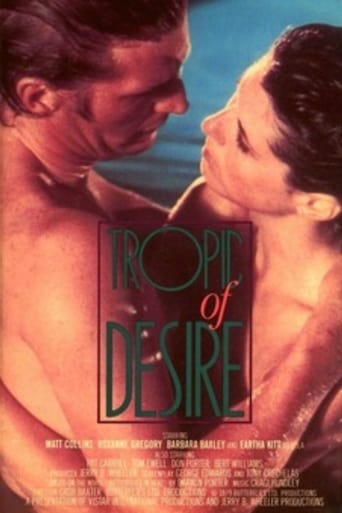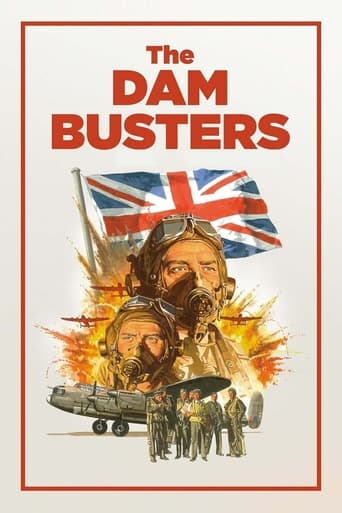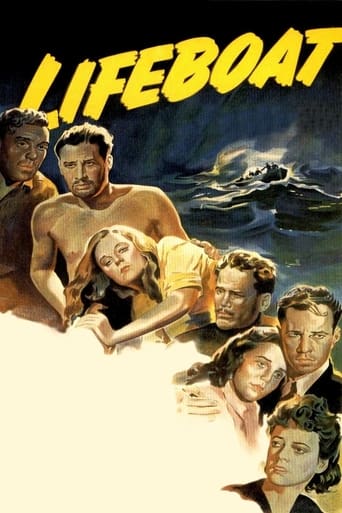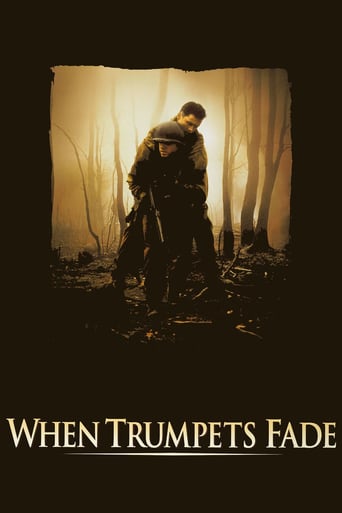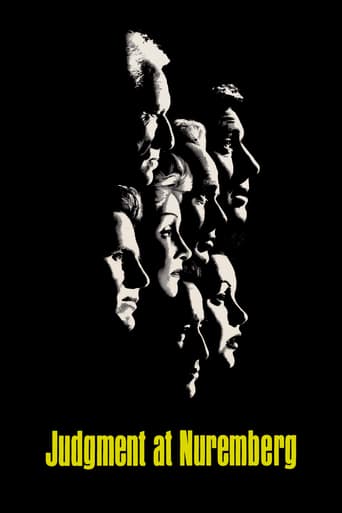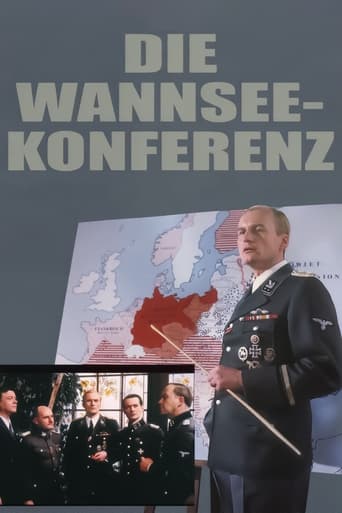

The Wannsee Conference (1984)
A real time recreation of the 1942 Wannsee Conference, in which leading SS and Nazi Party officals gathered to discuss the "Final Solution to the Jewish Question". Led by SS-General Reinhard Heydrich, the Wannsee Conference was the starting point for the Jewish Holcaust which led to the mass murder of six million people.
Watch Trailer
Cast
Similar titles

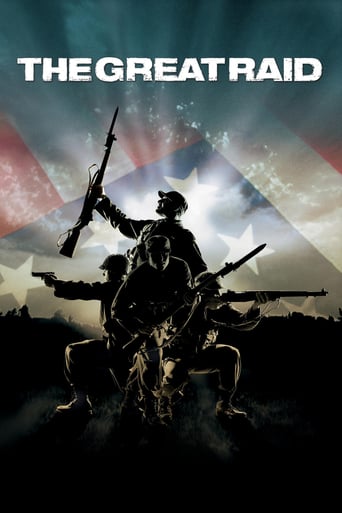
Reviews
Sorry, this movie sucks
This is a tender, generous movie that likes its characters and presents them as real people, full of flaws and strengths.
I cannot think of one single thing that I would change about this film. The acting is incomparable, the directing deft, and the writing poignantly brilliant.
A terrific literary drama and character piece that shows how the process of creating art can be seen differently by those doing it and those looking at it from the outside.
If you have ever wanted to see an autopsy into true and pure evil, this is it. Without gore or special effects, this is a study in the planning of one of the largest mass murders in the history of mankind.It's a truer and purer horror story than Freddy Krueger and Hannibal Lecter ever could possibly dream up. This is the horror created by seduction. It tells how the few create consensus among the weak, greedily upwardly mobile bourgeoisie who let themselves be pulled along down into darkness.While the particulars describe one particularly well documented episode of evil, the players and actions could unfold anywhere and any time. Just look at the actions of our own government today.
I haven't seen this is twenty years or so, and I can't remember it in detail, but I'm compelled to comment on it anyway because I found it to be so gripping -- amazing, really. And a German production at that.The reason that this film has haunted me for so long, is the almost complete disjunction between the substance of the Wannsee Conference and the gemütlich ethos of the meeting itself. Here they are, a dozen or so guys, most of them in smart uniforms, sporting eight PhDs among them, talking about how to get rid of Europe's Jews without being too obvious or too messy or too inefficient about the "getting rid of" business.At the same time, this meeting of minds takes place in an atmosphere of politesse and camaraderie. Everyone is polite and chuckles over witticisms. They take breaks to help themselves at the buffet table groaning with strudel and canapés and loaves of bread and hams. They drink cognac. Heydrich stumbles over a table leg and makes a joke about it. Heydrich, a handsome fellow, laces his business with a dry wit, and of course everyone at the table laughs appreciatively. He flirts with the pretty secretary. It's almost a party in which the participants just happen to be talking about classifying Jews and half-Jews and killing them. And it's a knotty problem. What do you do with mixed children, one of whose parents is Aryan and the other Jewish. Will the Aryan blood enrich the offspring or will the Jewish blood pollute the purity of the race? What about the children who are only one quarter Jewish? How about the Jews who are in the Army? It's a striking movie in which the character we root for the most argues only for involuntary sterilization. I can't remember the characters any longer, but I recall Adolph Eichmann as a minor character. He oozes pleasantries, smiles generously, and has the figures worked out. Heydrich is the genial leader who represents the Führer. Only in the last few minutes, when most of the participants have left, do two guests remain behind and balk openly, angrily.Hannah Arendt made famous the phrase, "the banality of evil." But what we see here isn't banal. It's an effective combination of pleasure and of business efficiency. These aren't small minds dealing with small issues. And they aren't repulsive-looking bald monsters, as they're so often depicted in fiction. They're mostly ordinary, efficient, good-natured, intelligent men who just happen to have embraced some of the worst ideas that Western civilization has ever produced. How nice it would be if we could judge people by their appearance. There was at one time a popular school of psychology called "physiognomy," which proposed just that. Alas, the worst of us can be as handsome and charming and the best of us.
(Note: Over 500 of my movie reviews are now available in my book "Cut to the Chaise Lounge or I Can't Believe I Swallowed the Remote!" Get it at Amazon.)What I want to do here is to note that The Wannsee Conference is a German language film with white English subtitles. Sometimes the subtitles are superimposed over a white background and the words disappear. That is why state of the art subtitles are yellow so that they don't get lost in the background. Otherwise the subtitles are very good, translating what needs to be translated and ignoring the extraneous.I also want to note that the somewhat miraculous script by Paul Mommertz is very much like a stage play with most of the action essentially confined to one set with the various players delivering their lines as the camera focuses on them, much as a spotlight might. I say "miraculous" because Mommertz forged his screenplay from the banal, bureaucratic and often euphemistic language used by the historical Nazis as they formulated the so-called "Final Solution." How to make such material dramatic was the problem Mommertz and Director Heinz Schirk faced. They achieved the nearly impossible through the subtle use of what I might call everyday "reality intrusions": the dog barking, the vainglorious Reinhard Heydrich tripping over a briefcase as he is posturing as the grand architect and fuhrer of the Holocaust, the stenographer flirting (and Heydrich's calculated, chilling affirmative response), the greedy drinking, the "Nazi rally" thumping of the table, the turf wars, the boorish jokes, etc. These served to highlight by contrast the horror that these men were so bureaucratically entertaining. Note too that when the stenographer asks if a verbatim report is desired, she is told that a detailed report will suffice. Thus the dumb brute reality could be edited later in a George Orwellian manner to further bureaucratize and euphemize what they were doing.What a truly verbatim report might have revealed is the point of this film. This is a work of art, and I want to say that real art, to the extent that it is didactic, fails. If the artist tries to teach a lesson or show us the way and the light through a human story, to that extent he or she loses control and becomes an advertiser, a propagandist, a preacher. We as audience or readers become not participants anymore but objects. A work of art is always a two-way street of participation between the artist and those viewing the art. We might agree with the message or we might not, but we are no longer equal participants in the experience.Yet what a work of art does is demonstrate a human truth through form. It is almost always an emotional truth. The Greeks emphasized tragedy because they understood the cathartic emotional experience that tragedy brings. What Mommertz and Schirk have done is present the truth as best they could discover it, and then they ran the closing credits. What we as audience experience depends on how well we participated, and what we brought as human beings to the experience. How well we concentrate, how aware we are of what is going on, how alert--these too are important. The Swannsee Conference is a demanding film, but it is surprising how quickly it moves, how engaged we become. The tension is not in what will happen at the end, of course. Instead the tension is in how it happens. We are held in thrall of discovering the essential nature of this most horrific and incredible evil done by the Nazis. And what we find out is that it was above all else banal and bureaucratic.This is its essence: the dehumanization of the objects upon which the evil is worked. It can be done no other way. It has been said that for good men to do evil it takes religious commitment. For ordinary men it is necessary to dehumanize. When Stuckart complains that women and children are being killed, he is told, "Women and children are Jews too."
The one really horrifying film about Shoah. None of the rest, especially Schindler's List, comes anywhere close. In this movie, nobody visibly dies; a roomful of bureaucrats chatters for an hour or so about the most efficient ways to go about the final solution. The ones who seem the worst (Eichmann, Heydrich) meet briefly to talk about co-opting the suckers; the one who seems the best horrifies us by dragging us in to cheering for him when he haggles about saving 70,000 "half-Jews." We are in the depths of Hell when we watch men in clean suits pencil in the details of every horror, pausing only for light refreshment and a bit of shagadelic banter with the babes.
